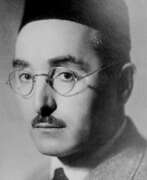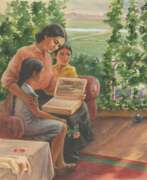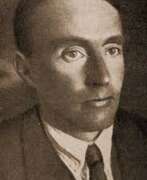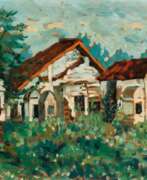Portrait Uzbekistan
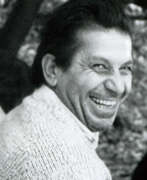

Robert Petrosovich Avakyan (Russian: Роберт Петросович Авакян) was a Soviet and Uzbek artist of the second half of the twentieth and early twenty-first centuries of Armenian origin. He is known as a painter, graphic artist, sculptor and teacher.
Robert Avakyan was trained in painting, but he is most famous as an author of monumental sculptures. He worked actively in Tashkent, participating in numerous exhibitions, including international sculpture competitions. The master also left his mark in such Uzbek cities as Bukhara, Nukus and Yangibazar, where he created significant monumental works.
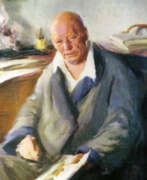

Pavel Petrovich Benkov (Russian: Павел Петрович Беньков) was a Russian and Soviet artist of the first half of the twentieth century. He is known as a painter, graphic artist, theater decorator, and teacher.
Pavel Benkov created portraits, landscapes, cityscapes, genre paintings. His style in his mature years can be described as impressionist, with attention to color and light. In 1929 he moved to Central Asia, where his style took on unique characteristics, reflecting local landscapes and culture. His work has had a significant influence on the painting traditions of Uzbekistan and Central Asia.
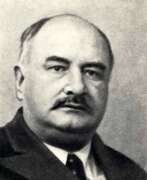

Konstantin Nikolaevich Istomin (Russian: Константин Николаевич Истомин) was a Russian and Soviet artist of the first half of the twentieth century. He is known as an avant-garde painter, teacher, and member of various art societies.
Konstantin Istomin began his career by studying in Munich with the Hungarian painter S. Hollosi, and became acquainted with the art of antiquity and the Renaissance. He then studied art history in Moscow and traveled to Greece and Italy. In his work, the artist combined the traditions of the Peredvizhniki with the European style, standing out with bright plasticity and color. The master was also engaged in theater art, creating scenery and costumes, and wrote theoretical works. He also taught from 1921 until the end of his life.
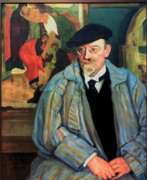

Ivan Semyonovich Kazakov (Russian: Иван Семёнович Казаков) was a Russian painter and graphic artist, known for his contributions to Orientalist art. Born on February 1, 1873, in Kasilova, Oryol Governorate, Kazakov studied at the Moscow School of Painting, Sculpture, and Architecture, and later at the Imperial Academy of Arts under the mentorship of Vladimir Makovsky.
Kazakov's work is notable for its vibrant depictions of Central Asian architecture and landscapes, particularly those of Samarkand, Bukhara, and Tashkent. His paintings often feature detailed portrayals of domes, minarets, and intricate patterns, capturing the essence of these historic cities. This unique focus on Orientalist themes distinguished him from his contemporaries and earned him a prominent place in Russian art history.
Throughout his career, Kazakov exhibited his works in significant venues in Saint Petersburg and Moscow. He also played a crucial role in the art community of Tashkent, where he taught and established his own studio. Several of his works are preserved in museums, including the State Russian Museum and regional art collections, which continue to attract art enthusiasts and collectors.
For updates on new works and auction events related to Ivan Semyonovich Kazakov, sign up for our exclusive alerts. Stay informed about the latest opportunities to acquire pieces by this remarkable artist.


Yevgeny Pavlovich Melnikov (Russian: Евгений Павлович Мельников) was a Soviet artist of the second half of the twentieth and early twenty-first centuries. He is known as a painter, teacher and poet who had a great influence on the development of the national school of modern painting in Uzbekistan.
Yevgeny Melnikov excelled in portrait painting, still life, landscape and animalistic compositions. His works were characterized by painterly temperament, energy of stroke and non-standard compositional solutions. In his works one can find both traditional elements of still life (fruits, flowers) and unusual objects (organ pipes, fish). The master also introduced into his compositions fragments from the works of his favorite French post-impressionists.
Melnikov's works are in museums and private collections in Russia, France, Germany, Holland, Sweden and many other countries.


Ural Tansykbaevich Tansykbayev (Russian: Урал Тансыкбаевич Тансыкбаев) was a distinguished Uzbek painter of Kazakh descent, celebrated for his vivid and expressive works. Born on January 1, 1904, in Tashkent, Tansykbayev's artistic journey was profoundly influenced by Fauvism and French Expressionism, evident in his early work's increased decorativeness and vibrant use of color. His contributions to the Regionalist movement further defined his legacy, marking him as a pivotal figure in Uzbekistan's art history.
Throughout his career, Tansykbayev's art evolved, with a significant shift in the 1950s towards landscape painting, which became the main genre of his later works. His talent and contributions were recognized with numerous governmental awards, including the prestigious Order of Lenin and the Hamza State Prize of the Uzbek SSR in 1973. Tansykbayev's works are cherished globally and can be found in several museums, including the Ural Tansykbayev Memorial Museum in Tashkent, the State Tretyakov Gallery in Moscow, and the State Museum of Oriental Art, also in Moscow.
The Ural Tansykbayev Museum in Tashkent, established by his widow, Elizaveta Tansykbayeva, serves as a testament to his life and work. Opened in 1981, the museum houses not only his paintings but also the artist's studio, offering a personal glimpse into his creative world. This museum stands as a cultural landmark, celebrating the legacy of a man who significantly impacted Uzbek and Soviet art.
For collectors and art experts interested in Tansykbayev's profound and colorful works, signing up for updates on new product sales and auction events related to Ural Tansykbayev is highly recommended. This subscription ensures you stay informed about opportunities to own a piece of this legendary artist's legacy.


Alexander Nikolayevich Volkov (Russian: Александр Николаевич Волков), an avant-garde Russian artist, has left a significant mark on the art world with his unique blend of Cubism and Eastern aesthetics. Born in 1886 in Fergana, Uzbekistan, Volkov was deeply influenced by the vibrant culture and landscapes of Central Asia, which is vividly reflected in his works. His approach combined geometric forms, rich color palettes, and themes from daily life in Turkestan, making his paintings a unique fusion of European avant-garde styles and Uzbek traditions.
Volkov's paintings are distinguished by their dynamic compositions, intricate use of color, and incorporation of traditional motifs, reminiscent of oriental carpets. This stylistic amalgamation is particularly evident in his celebrated works such as "Pomegranate Teahouse" and the "Caravan" series, where he achieved a dramatic interplay of forms and colors. Despite facing political challenges and periods of obscurity due to his avant-garde methods, Volkov's commitment to depicting the essence of Eastern life and his innovative use of geometry and color have solidified his legacy as a pioneer of contemporary art in Central Asia.
His notable contributions to art and education were eventually recognized when he was awarded the title of People's Artist of the Uzbek SSR in 1946. Volkov's influence extended beyond his lifetime, with his works being featured in major exhibitions and collections, including the State Tretyakov Gallery in Moscow and the State Museum of Oriental Art. His artistic legacy continues to inspire and captivate audiences worldwide, highlighting the cultural richness of Uzbekistan and the innovative spirit of early 20th-century avant-garde art.
For those interested in exploring the vibrant interplay of Eastern culture and avant-garde artistry, Alexander Nikolayevich Volkov's work offers a fascinating journey. Sign up for updates on new product sales and auction events related to Volkov's art and delve deeper into the legacy of this remarkable artist.
